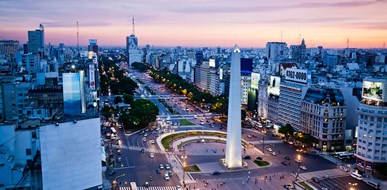Human Rights Cities: What do they have in common?
Published 3 October 2019By Lisa Roodenburg

© Goodfreephotos. Photo by Lilen Scarpitta
A growing number of cities profile themselves as ‘Human Rights Cities’. Rosario, Argentina, became world’s first human rights city in 1997, Gwangju, South Korea has been hosting the World Human Rights Cities Forum since 2011 and Buenos Aires has a local Secretariat for Human Rights and Cultural Pluralism. Rosario and Gwangju are presenting themselves as human rights cities, while Buenos Aires is not. What makes a city a human rights city, and who decides on that?
The Human Rights City Label
Generally a human rights city is understood as a local government that explicitly refers to international or regional human rights treaties and uses human rights in their local policies, programs and projects. Clearly, the human rights city label allows space for interpretation. There are several networks of human rights cities, but the term is often self-declared. Some of these human rights city networks have developed human rights city-toolkits. For example, the first human rights city alliance, Peoples Movement for Human Rights Learning (PDHRE), has developed a human rights city methodology. To be part of the PDHRE list of human rights cities, a local government must commit to their methodology. Likewise, during the 2014 World Human Rights Cities Forum in Gwangju another ‘methodology’ was developed: the Guiding Principles for a Human Rights City. Concurrently, the city network ‘United Cities and Local Governments’ promotes the adoption of the Global Charter-Agenda for Human Rights in the City, as well as the European Charter for the Safeguarding of Human Rights in the City. Another option is to develop a city-specific plan. In this way cities decide what they prioritize: which human rights, whether human rights have legal implications locally and who should benefit from the human rights city.
Amsterdam and Buenos Aires
Amsterdam is one of the cities whose human rights city label is self-declared. In 2016, the local government of Amsterdam launched the Amsterdam Human Rights Agenda. In this agenda, Amsterdam states that “a human rights city is a city that explicitly refers to the Universal Declaration of Human Rights and the European Charter in their local social policies”, although the agenda has no legal implications. Furthermore the Human Rights Agenda strives to enhance knowledge on human rights among civil servants and inhabitants. There was some confusion on what being a human rights city entails. While the Human Rights Agenda set the goal for Amsterdam to become a human rights city over the course of a few years, at international events Amsterdam was already calling itself a human rights city.
Contrastingly, Buenos Aires does not profile itself as a human rights city, although it explicitly commits to human rights. Like all large cities in Argentina, the local government runs a Secretariat for Human Rights and Cultural Pluralism. The secretariat works on the protection and promotion of human rights, specifically in relation to diversity: “We work for a society with greater equity, against discrimination, in favor of inclusion, integration and diversity. We strive to generate a cultural change based on the promotion and protection of rights, promoting spaces for dialogue and encounter”. Local civil society actors are criticizing the local government for not doing ‘real’ human rights work: “what they are doing is not bad, but it has nothing to do with rights”. Though, since Buenos Aires explicitly commits to human rights, they might as well call themselves a human rights city.
Buenos Aires is not a human rights city, Gwangju and Rosario are human rights cities and Amsterdam strives to be one. What do Human Rights Cities have in common? For sure a commitment to human rights and the intention to make known their human rights city status. Some cities use the human rights city label in an aspirational sense, as a way to set an agenda for the coming years. Others use the label to validate the work they have already done. The absence of the human rights city label does not mean that human rights are disregarded, while the presence of the label might not always reflect the actual realization of the human rights city aspirations.

